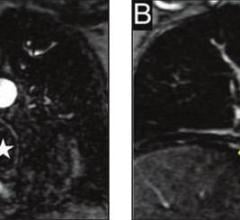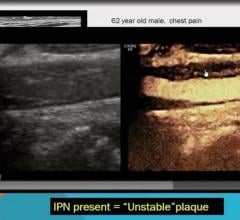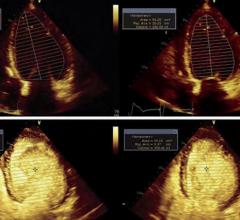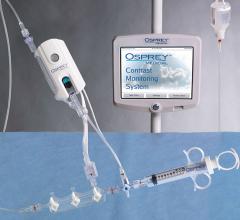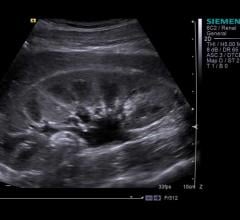Gadolinium contrast agents (GBCAs) are partly retained in the brain, raising safety concerns, as seen in this MRI.
In February 2018, a workshop was held at the National Institutes of Health (NIH) in Bethesda, Maryland, to explore concerns about the safety of gadolinium-based contrast agents (GBCAs) and gadolinium retention. The workshop was co-sponsored by NIH, the Radiological Society of North America (RSNA) and the American College of Radiology (ACR). The organizers invited an international group of experts to discuss the current literature, identify knowledge gaps, prioritize future research initiatives and foster collaborative standardized studies. The group’s research roadmap was published today as a special report in the journal Radiology.
Attendees included researchers, GBCA manufacturers and representatives of the FDA, invited based upon their expertise in a diverse set of scientific and clinical disciplines relevant to the study of the chemistry, measurement, clinical manifestations or health-related effects of retained gadolinium in human tissues.
“It is our hope that this roadmap can serve to promote global, comprehensive collaborative research that effectively addresses the many important questions on the clinical significance of gadolinium retention in patients undergoing contrast-enhanced MRI examinations,” said Herbert Y. Kressel, M.D., co-author of the report, professor of radiology at Harvard Medical School in Boston and former editor of Radiology.
GBCAs have revolutionized magnetic resonance imaging (MRI), providing crucial, life-saving medical information often unavailable from other imaging modalities. Since initial approval in 1988, over 450 million intravenous GBCA doses have been administered worldwide.
Although GBCAs are considered safe, some types of GBCAs have been associated with a rare condition called nephrogenic systemic fibrosis, which occurs mainly in patients with advanced kidney disease.
More recently, mounting evidence has demonstrated long-term retention of gadolinium in human tissues after GBCA exposure. However, there is currently no scientific evidence that the retained gadolinium causes harm. Moreover, there is no proven scientific association between a range of patient-reported symptoms and GBCA exposure.
“Despite the high level of interest in the gadolinium retention observed in the brains of patients receiving gadolinium-based contrast agents, in editing manuscripts on the topic submitted to Radiology, I noted the need for a more comprehensive, coordinated research program to more definitively address the many important, unanswered questions about gadolinium retention and its clinical significance,” Kressel said. “I was gratified by the support we received for the Gadolinium Retention-Research Roadmap workshop by NIH, RSNA and ACR.”
The greatest priorities in GBCA research are to determine if gadolinium retention adversely affects the function of human tissues, if vulnerable populations such as children are at greater risk, and if retention is causally associated with short-term or long-term clinical manifestations.
“The workshop was helpful in identifying the knowledge gaps that need to be addressed to understand the clinical significance of observed signal increases in the brains of patients receiving these agents, as well as those due to the retention of gadolinium in bone, skin and liver and other portions of the brain that do not demonstrate signal intensity increases on MRI,” Kressel said. “Understanding the biologic changes due to the retention in these areas is essential in determining the clinical significance, if any, of gadolinium retention.”
He added that the workshop was also helpful in pointing out the need to specifically study potentially vulnerable populations of patients who might be susceptible to release of gadolinium- based compounds from long-term reservoirs, in bone for example. Vulnerable patient populations include post-menopausal women, pregnant or lactating women, fetuses and young children with growing bones and ongoing organ development, and patients with chronic diseases who undergo a large number of contrast-enhanced MRI examinations.
The roadmap highlights knowledge gaps in GBCA research, proposes methods to address these gaps, identifies the feasibility and limitations of each approach and assesses priority levels. Crucial to these efforts is the standardization and validation of gadolinium and GBCA tissue measurement methods and quality assurance procedures. The authors also point out the need to study existing large population databases, such as the Mayo Clinic Study of Aging, with large numbers of patients who undergo contrast-enhanced MRI exams. According to Dr. Kressel, analysis of these types of databases may help identify specific areas of concern that could be addressed in prospective, controlled studies.
For more information: http://RSNA.org/radiology
Also see:
Scientists Develop New MRI Tool for Cancer Diagnosis and Therapy
Iron Outperforms Gadolinium as MRI Contrast Agent
First FDA-Approved Study of Focused Ultrasound to Open Blood-Brain Barrier


 August 17, 2023
August 17, 2023 
